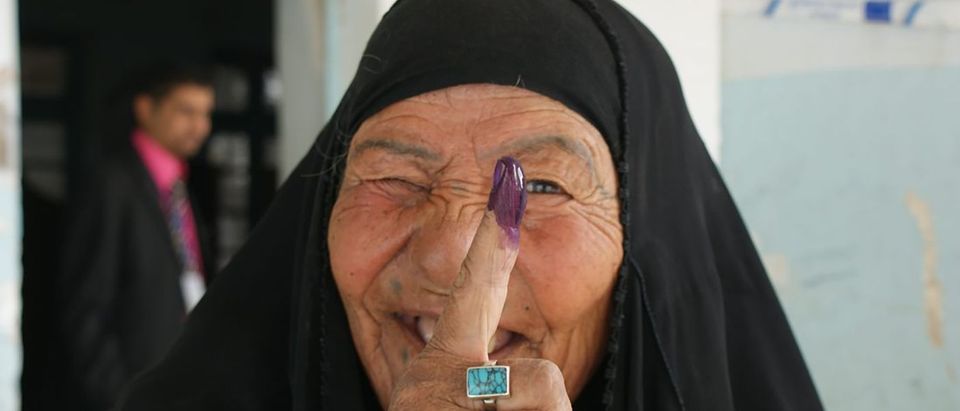Defining Human Security

Eileen Babbitt, PhD
Dr. Eileen Babbitt is a Professor of Practice of International Conflict Management. She served as Director of the Leir Institute from 2014-2020.
Human Security defines security as:
-Person-centered
-Context-specific
-Multi-dimensional
-Preventive
Human security asks:
-Security for whom?
-Security from what?
-Security by what means?
Defining Human Security
Human security argues that seeking the security of the individual or community, as defined by that individual or community, is as important–and sometimes more important–as seeking the security of the state. Although the term “human security” is relatively recent, originating in the 1990s post-Cold War era, the question of whose security is primary–the individual’s or the state’s–is seminal in international relations scholarship. The argument revolves around differences of viewpoint on what obligations the state has to its people in terms of providing for their security, and whether individuals have claims beyond the state if/when their security is threatened. In the 1990s in particular, these discussions included expanding the definition of security beyond physical safety (e.g., to include economic, identity, and rights-based dimensions), the recognition that entities other than the state provide for individuals’ security when the state either can’t or won’t, and the need for including vulnerable groups in decision-making about security provision.
Human security covers a broad range of issues and practices, but they all share four main analytic components:
- person-centered, focusing on security as it is experienced by individual people and communities;
- context-specific, working from the ground up rather than top down to define challenges and design solutions;
- multi-dimensional, requiring both an interdisciplinary approach and one that integrates all voices and perspectives; and
- preventive, choosing to look at root causes and early indicators to be pro-active rather than reactive to threat.
Human security thus provides a powerful lens through which to analyze all threats to the security of individuals and communities.
The issue areas in which the human security lens is often applied include: gender-based violence; climate change; human trafficking; forced migration; drug policy; civilian protection through human rights or non-violent action; multi-track diplomacy; youth and conflict; financial inclusion; and provision of basic services such as healthcare and education. However, it is also important to ask how the human security lens can and should be used to analyze causes of and responses to “hard” security challenges such as non-state armed groups, terrorism, and cybersecurity.
In practice: Security from what? Security for whom? Security by what means?
In its application, human security begins by asking the questions: Security from what? Security for whom? Security by what means? These questions originate in the critical security and feminist security literature that preceded the development of human security. They take into account that the human community is not monolithic, and security threats may be seen differently according to gender, class, race, ethnicity, religion, etc. These questions also recognize that the state itself may be the biggest threat to the human security of its citizens and protection may need to begin by involving other actors. Finally, they create a vision of security that is not only based on the absence of violence but on attaining freedom and dignity.
To be an effective human security practitioner, it is also important to be aware of one’s own assumptions, values, and biases that one brings to our work. Such reflective practice is crucial for being truly able to understand and appreciate the perspective of others, which is the basis of effective human security analysis.
Babbitt, Eileen. Leir Briefing Room: Defining Human Security. Medford: Leir Institute for Migration and Human Security, 2023. https://leir-briefing-room.ghost.io/defining-human-security/.
Recommended Reading
Booth, Ken. 2005. “Critical Explorations,” in Critical Security Studies and World Politics, edited by Ken Booth, Boulder: Lynne Rienner Publishers
Commission on Human Security, (2003). Human Security Now. United Nations.
Gasper, Des, 2005. “Securing Humanity: Situating ‘Human Security’ as Concept and Discourse,” Journal of Human Development, 6:2, 221-245.
Martin, Mary and Taylor Owen. 2008. “The Second Generation of Human Security: Lessons from the UN and EU Experience.” International Affairs 86.1: 211-224.
MacFarlane, Neil and Yuen Foong Khong. (2006) Human Security and the UN: A Critical History. Bloomington: Indiana University Press.
Owen, Taylor, ed. (2008) Human Security. London: Sage Publications
Report of the Secretary-General, Human Security (A/64/701), 8 March 2010
Sen, Amartya. (1999). Development as Freedom, New York: Anchor Books.
Tadjbakhsh, Shahrbanou and Anuradha M. Chenoy (2007) Human Security: Concepts and Implications. London: Routledge: Taylor & Francis Group
Tripp, A.M., M. M. Ferree, & C. Ewig Eds. (2013) Gender, Violence, and Human Security: Critical Feminist Perspectives. NYU press.
United Nations Development Program, (1994). “New Dimensions of Human Security.” In Human Development Report. 22-46.
UNDP (United Nations Development Programme) (2022) Special Report on Human Security: New Threats to Human Security in the Anthropocene. New York.
United Nations Trust Fund for Human Security. 2022. Realizing the Triple Nexus: Experiences from Implementing the Human Security Approach. https://www.un.org/humansecurity/wp-content/uploads/2022/03/FINAL-Triple-Nexus-Guidance-Note-for-web_compressed.pdf
UN Trust Fund for Human Security Handbook: https://www.un.org/humansecurity/wp-content/uploads/2018/05/HS-Handook_rev-2015.pdf
World Bank Group and the United Nations (2018). Pathways to Peace: Inclusive Approaches to Preventing Violent Conflict. https://openknowledge.worldbank.org/handle/10986/28337
